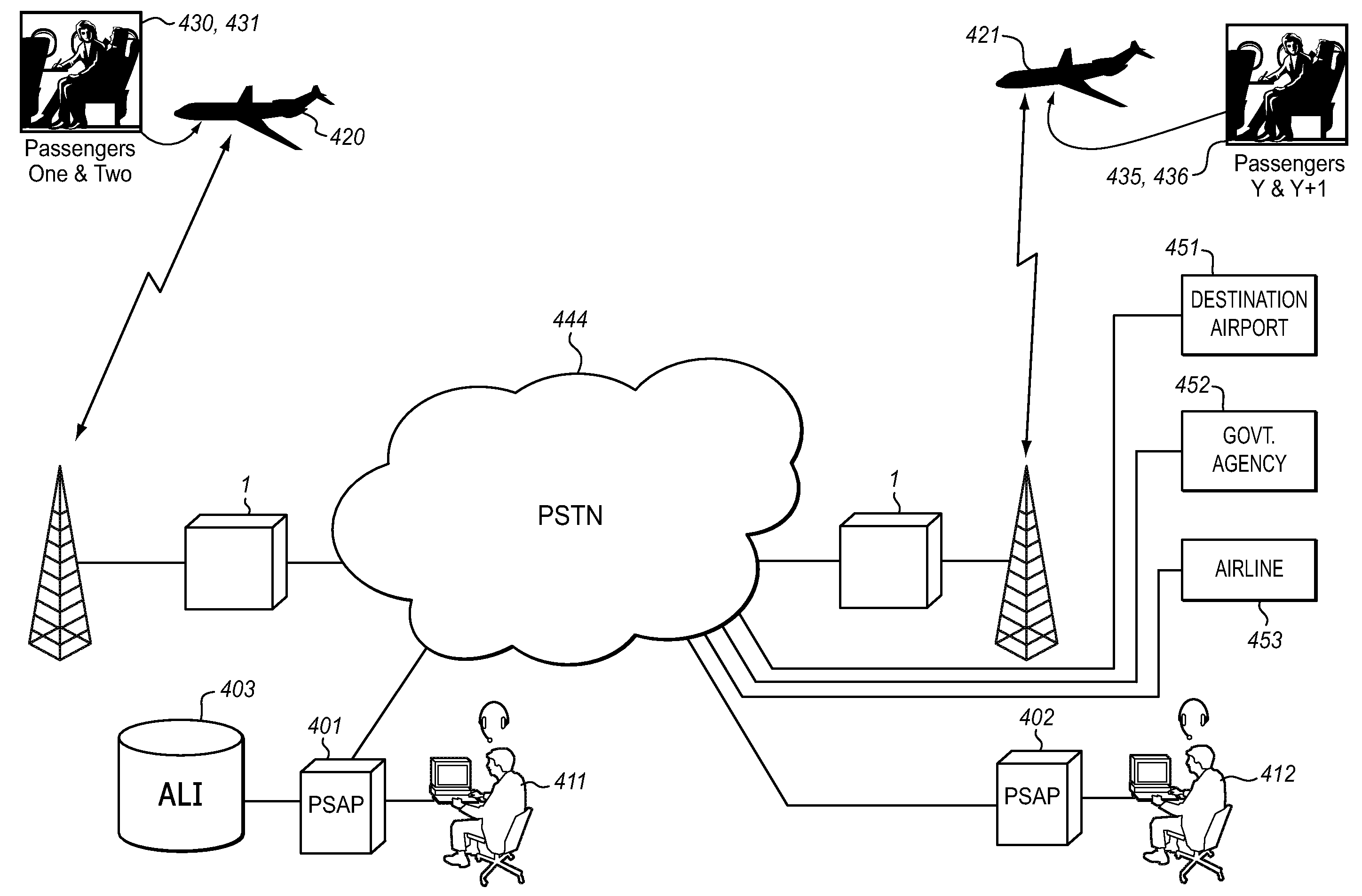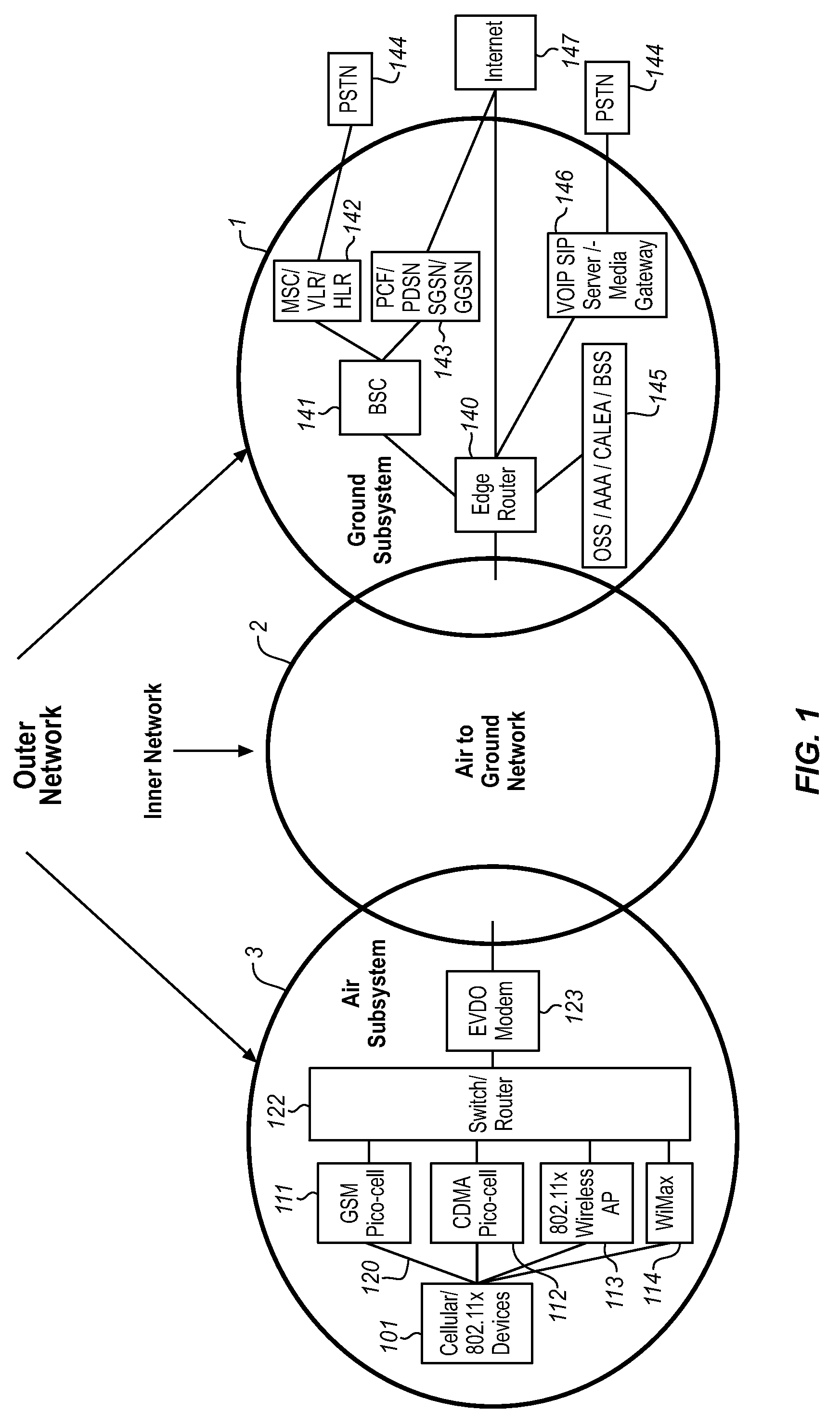System for managing an aircraft-oriented emergency services call in an airborne wireless cellular network
- Summary
- Abstract
- Description
- Claims
- Application Information
AI Technical Summary
Benefits of technology
Problems solved by technology
Method used
Image
Examples
Embodiment Construction
Existing Wire-Line, Wireless, and VoIP Emergency Services Systems
[0020]The existing emergency services network is made up of Selective Routers (SR), Automatic Location Identification (ALI) databases (both local and national), and Public Safety Answering Points (PSAPs) with their various Centralized Automatic Message Accounting (CAMA), trunk connections, and various data connections for querying the Automatic Location Identification (ALI) databases. Beyond these network elements are the public safety organizations themselves (Police, Fire, and Ambulance) and the communications networks that support them.
[0021]FIG. 6 illustrates, in block diagram form, a typical existing E911 network for wire-line applications. The location of the subscriber, who is calling the emergency services network, is used for two key purposes. The first is routing of the emergency services call to the correct Public Safety Answering Point (PSAP) 604, and the second is in the delivery of the geographical locati...
PUM
 Login to View More
Login to View More Abstract
Description
Claims
Application Information
 Login to View More
Login to View More - R&D
- Intellectual Property
- Life Sciences
- Materials
- Tech Scout
- Unparalleled Data Quality
- Higher Quality Content
- 60% Fewer Hallucinations
Browse by: Latest US Patents, China's latest patents, Technical Efficacy Thesaurus, Application Domain, Technology Topic, Popular Technical Reports.
© 2025 PatSnap. All rights reserved.Legal|Privacy policy|Modern Slavery Act Transparency Statement|Sitemap|About US| Contact US: help@patsnap.com



